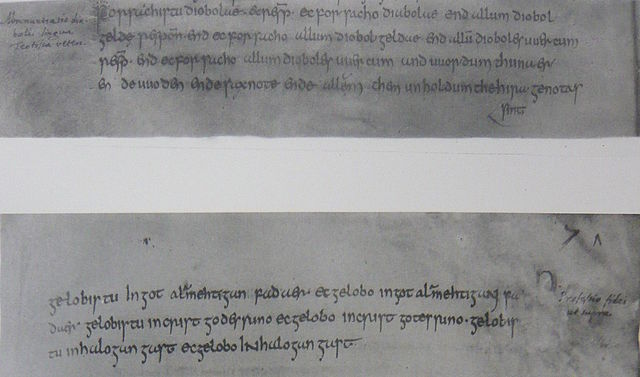The Flemish Movement is an umbrella term which encompasses various political groups in the Belgian region of Flanders and, less commonly, in French Flanders. Ideologically, it encompasses groups which have sought to promote Flemish culture and the Dutch language as well as those seeking greater political autonomy for Flanders within Belgium. It also encompassed nationalists who seek the secession of Flanders from Belgium, either through outright independence or unification with the Netherlands.
Jan Frans Willems
Bust of Hugo Verriest [nl] in Roeselare, Belgium.
Excerpt from the newspaper De Vlaamsche Strijd of 1899. Preserverd in the Ghent University Library. Good example of the propaganda that was held.
Bilingual road sign in Linkebeek. The French words have been painted over, leaving the Dutch words only.
Dutch is a West Germanic language, spoken by about 25 million people as a first language and 5 million as a second language and is the third most spoken Germanic language. In Europe, Dutch is the native language of most of the population of the Netherlands and Flanders. In South America, it is the native language of the majority of the population of Suriname, and spoken as a second language in the polyglot Caribbean island countries of Aruba, Curaçao and Sint Maarten. All these countries have recognised Dutch as one of their official languages, and are involved in one way or another in the Dutch Language Union. Dutch Caribbean municipalities have Dutch as one of the official languages too. Up to half a million native speakers reside in the United States, Canada and Australia combined, and historical linguistic minorities on the verge of extinction remain in parts of France and Germany.
The Utrecht baptismal vow
Title page of the Statenvertaling (1637) reads: Biblia ... Uyt de Oorspronckelijcke talen in onse Neder-landtsche tale getrouwelijck over-geset. (English: From the Original languages into our Dutch language faithfully translated.
Indonesia did not adopt the Dutch language after independence. However the Indonesian language absorbed a lot of Dutch vocabulary into its language. Seen here is the kantor pos (from Dutch postkantoor), meaning post office.
Standard Dutch used in a 1916 ad in South Africa before Afrikaans replaced Dutch for use in media


![Bust of Hugo Verriest [nl] in Roeselare, Belgium.](https://upload.wikimedia.org/wikipedia/commons/thumb/4/4e/Roeselare_Hugo_Verriest_-1.JPG/640px-Roeselare_Hugo_Verriest_-1.JPG)





